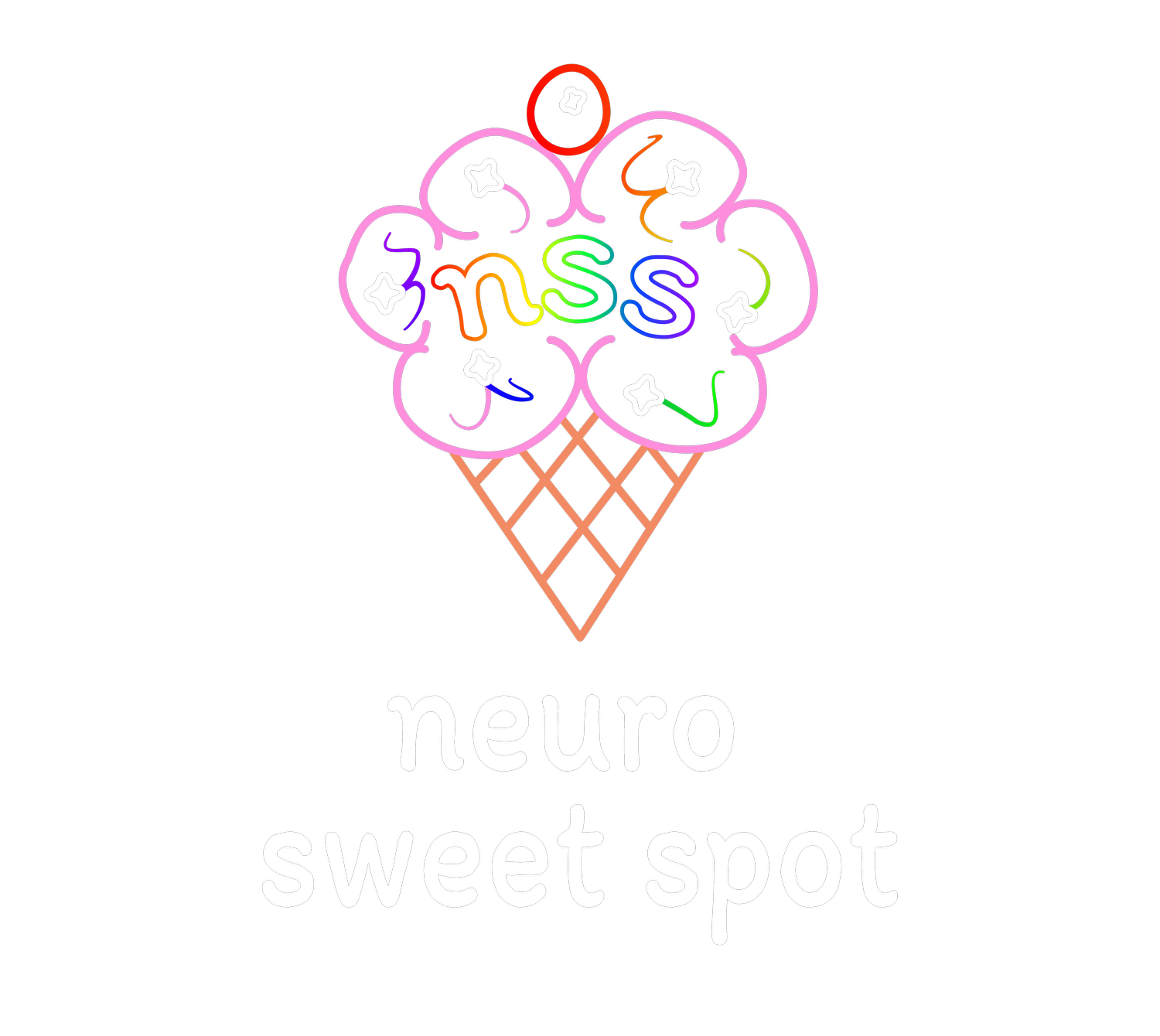
Education and Tools for Parents Learning about Neurodivergence For Their Kids
Rainbow Brains:
Understanding & Supporting Your Child’s Unique Mind
Not Every Brain Is a “Blue Brain” (And That’s a Good Thing)
When we look at a rainbow we don’t sit there and think “blue is the best color, so all the colors should just be blue.”
No. Orange is supposed to be orange. Green is supposed to be green.
Blue is great; but it’s not the only one we need.
Some kids have orange brains—maybe creative, spontaneous, nonlinear thinkers.
Some have green brains— maybe deep thinkers, hyper-focused, pattern seekers.
And every hue and shade in between.
But when the world is largely built for blue brains, it can make the rest of us feel crazy.
School systems are largely built for “blue brains” aka "neurotypical brains” but, again, note the quotes. Intentional
If your child isn’t a blue brain, they may have been told (explicitly or subtly):
❌ “Just focus.”
❌ “Stop being so sensitive.”
❌ “Why are you doing it like that?”
But what if the goal isn’t making them more “blue?” (because that makes them more blue, like sad blue 🙃)
What if the goal is helping them thrive in their own color—while keeping them safe in a world built for blue.
How to Let Unique Colors Shine Bright in a Blue-Brain World
The key to helping your child flourish is trust and capability—when they feel safe and supported, they can:
✅ Drop the mask of trying to “look blue.”
✅ Ask for what they actually need, not what others think or assume they need.
This requires unlearning and relearning as a parent. Instead of asking:
🔵 “How can I make my child act more blue?”
Ask instead:
🌈 “How can I help my child exist as their true color without burning out?”
🌈 “What supports do they actually need to function at their best?”
🌈 “Where do they feel safe enough to be themselves?”
Dropping the Mask (When It’s Safe to Do So)
Kids often mask (pretend to be blue) as a survival skill.
But masking all the time leads to:
🚨 Burnout
🚨 Anxiety
🚨 Feeling disconnected from themselves (… depression) < that’s the other type of blue we were talking about earlier…
The goal isn’t to make them stop masking entirely, because honestly sometimes that is a very helpful skill to have in your abilities. It’s being able to identify safe spaces to unmask, and how to keep safe and balanced when they do have to mask.
As a parent, you can ask:
💡 Who are the people that accept them as they are?
💡 What environments allow them to function naturally?
💡 What tangible tools or skills will they need to help themselves when they have to mask?
💡 What allows them to feel less pressure to “perform”?
The Forest Analogy: Helping Your Child Navigate THEIR Challenges
Everyone has their own forest—the challenges, struggles, and overwhelming parts of life.
The mistake?
Kids are often told what’s “hard” based on someone else’s experience—not their own.
For example:
🛑 Some kids fear social rejection—their “forest” might be public speaking or making friends.
🛑 Others struggle with sensory overload—their “forest” might be crowded places, bright lights, or chaotic environments.
The first step is identifying your child’s actual forests—not assuming them based on typical expectations.
How to Help Your Child Prepare for the Forest (Without Losing Themselves in It)
Forests aren’t bad places. In fact, many people learn to love them.
Life gets much richer when kids learn to navigate their forests instead of avoiding them completely.
Our job as parents isn’t to remove every challenge—it’s to equip them with the tools they need to handle those challenges in a way that works for their brain.
Instead of asking:
🔵 “How can I make them push through?”
Try asking:
🌈 “What do they need to feel safe and capable?”
Here are some ways to help them prepare:
🛠 Sensory supports: Earplugs, sunglasses, fidget tools
🛠 Coping strategies: Grounding techniques, breathing exercises
🛠 Self-advocacy skills: Teaching them how to ask for breaks, accommodations, or modifications
The Goal: Helping Your Child Thrive in Their Own Color
Your child does not need to be trained to be a “blue brain” to be successful.
The goal is to help them:
✅ Understand and embrace their own color.
✅ Build a life that works for their unique brain.
✅ Find spaces where they don’t have to mask.
When we stop trying to change their color and instead support their way of thinking and learning, we create space for real growth.
Key Takeaways for Parents
🔹 Not all brains are “blue”—and that’s a good thing. Embrace your child’s unique color.
🔹 Masking is sometimes necessary, but not all the time. Help your child find places where they don’t have to.
🔹 Your child’s “forests” are unique to them—don’t assume their challenges based on someone else’s fears.
🔹 Preparing for challenges doesn’t mean forcing them to change—it means equipping them to move through the world in their own way.
By understanding your child’s true colors and giving them the tools they need, you help them thrive as themselves—not just survive trying to be someone else.

